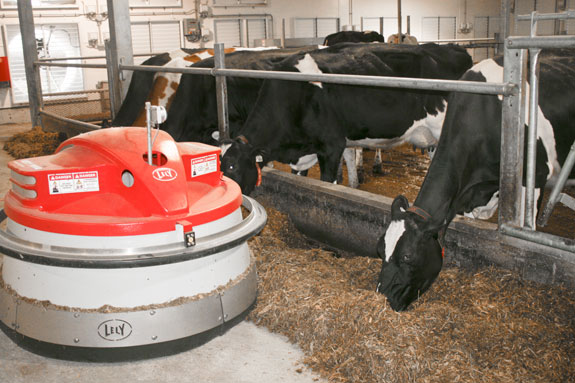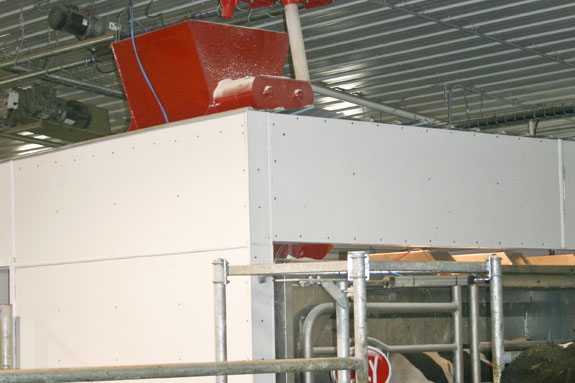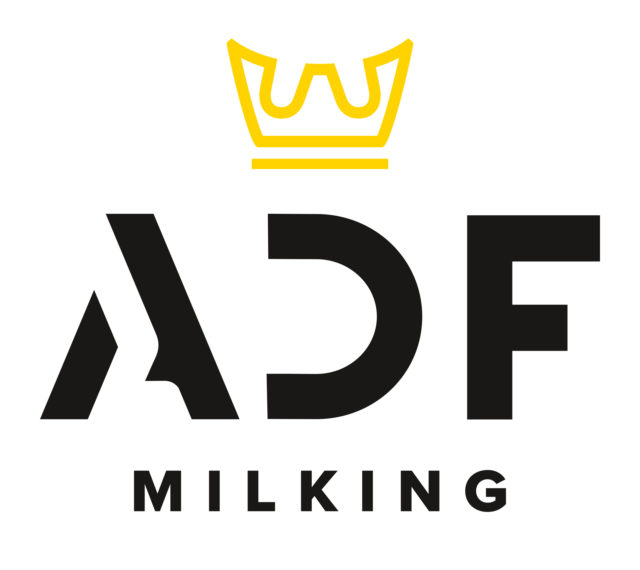“We have increased production,” he says. “We have improved udder health, and we have the freedom not to be in the barn at 5:30 a.m.”
Those are all things most dairies would like to add to their list of achievements.
Benner Holsteins milks 300 cows and farms 1,500 acres near Steinbach, Manitoba. Most of the crop is fed but on some good years some grain is marketed off the farm.
Normally the farm has 650 acres in corn, of which 200 are chopped and the remainder harvested at 24 per cent moisture. The high-moisture corn is stored in a Harvestore silo and delivered to the barn with an auger, and another auger delivers the top dressing.
“The cows adapted much more quickly than we thought they would,” he adds. “So even the move was a pleasant surprise.”
The move came a little over a year ago, in December 2009, and after a complete cycle in the barn, the verdict is unanimous; the choice to move to a freestall barn with four robotic milking units was a good one.
While many new barns include robotic milkers, the one at Benners is unique in Canada because it feeds high-moisture corn.
Don says the family worked with the barn’s contractor, Penner Farm Service of Blumenort, in designing the system.
“We had been feeding high-moisture corn in our tiestall barn and knew how much the cows liked it and how good it was for milk production,” he says. “So we wanted to feed it in the new barn as well.”
He says engineers came up with a design with very few moving parts and keeps the corn from bridging in the hopper.

“There is an auger that runs across the top and the corn falls into a gravity tube to go down to the animal,” he says.
In a year of operation, in all types of weather conditions, the system has not caused a problem and milk production has actually increased.
Don says cooperation on a number of fronts was the key to achieving the move as quickly as they did. The family decided to build a new barn in April and were in it by December of the same year.
“We found that if you work with the provincial regulators, things can move along quite well,” Don says. “We were able to get the increase in animal waste units approved within three months.”
During that time the Penners also visited several barns looking for features they wanted to incorporate or avoid in their new structure.
“We saw some that were targeted entirely at the cows, while others were entirely about worker comfort,” he says. “We wanted a balance, so there was not one barn that we patterned ours after, but several different ones. Fellows are also good about telling you what to avoid.”
Since their opening, they have hosted several other dairymen who are building a new structure and are interested in the high-moisture corn delivery system.
“Especially from Ontario and Quebec, where they feed more high-moisture corn,” Don says. “They know how good it is and are excited about a system that can deliver it.”
The farm’s top-producing animals are not being milked more than five times a day and on average the herd is milked three times.

Like with most management practices, the higher producers are showing the greatest response.
“We have our best cows being milked five times a day, and they are eating more and producing more,” he says. “The return is still better because our overhead costs don’t increase but we are getting more milk.”
Along with the move to the new barn, the Penners increased their milking herd from 200 to 300 animals. They used all of their own animals and that meant a reduction in the average age of the herd, which is 6.5 years. He counts on cows being around for at least four lactations.
The farm generates about 75 per cent of its income from milk production and 25 per cent from the sale of genetics. That is a change from only a few years ago, when it would have been close to equal for each enterprise.
The old tiestall barn is still used to house the farm’s genetic herd, which is 60 cows that Don laughingly refers to as his pets. He concentrates his efforts on milking in the tiestall barn while sons Tim, 27, and Scott, 25, look after the operations in the new barn.
While Don handles the milking in the old barn, the sire selection is done by committee, with all three helping decide on the mating. The Penners use a wide selection of bulls trying to target various parts of the market, but the overall goal is clear.
“We breed to get animals that we would like to have in our barn,” he says. “Hopefully, they will be good animals for someone else as well.”
The tiestall system allows him closer interaction with individual cows, and is better for showing animals to visitors.
“The milk price has dropped in the U.S. and that has a huge impact on the sale of animals,” he says. “Milking more cows has also increased that portion of the bottom line.”
He says the biggest decrease in the demand for animals has come in the range of $2,500 to $15,000 animals.
“We used to sell a lot of cows in that range and the market is virtually gone,” he says.
The top animals are still selling and the farm has sold three young animals for $26,000 each in the last year, one going to Saskatchewan, another to Ontario and the third to Quebec.
The hours are more flexible but also allow the operator to concentrate on work that provides a higher return. The robotic milkers have meant a reduction in total staff from eight to seven.
“We are spending more time looking after the cows, and doing things that show a much better return,” he says. “That is not the only issue; the robots are much more consistent and that is a big advantage to the animal.
“I spent 40 years in the tiestall barn and tried to get a lot of different people to put the milker on the same way I did,” Don says. “That didn’t happen and the animals were the ones that suffered. Now it is consistent every time, which is a big advantage.”
He has had a year to evaluate the new barn and its advantages, and Don Penner is still not sure what the best feature is, but he does know that it was made, together with his two sons who have made a commitment to the dairy industry, and that is a good thing. PD
Les Kletke is a field editor from Altona, Manitoba.
PHOTOS:
TOP: Scott, Don and Tim Penner during an open house this summer. The father and sons agree the new barn was a good decision, but they can’t agree on the best feature.
MIDDLE: Robots help out wherever possible doing repetitive tasks, freeing the Penners to concentrate on higher-value management details.
BOTTOM: The system is designed to deliver high-moisture corn to the cows when they come to be milked. Don Penner credits the palatability of high-moisture corn with increasing production. Photos by Les Kletke.








